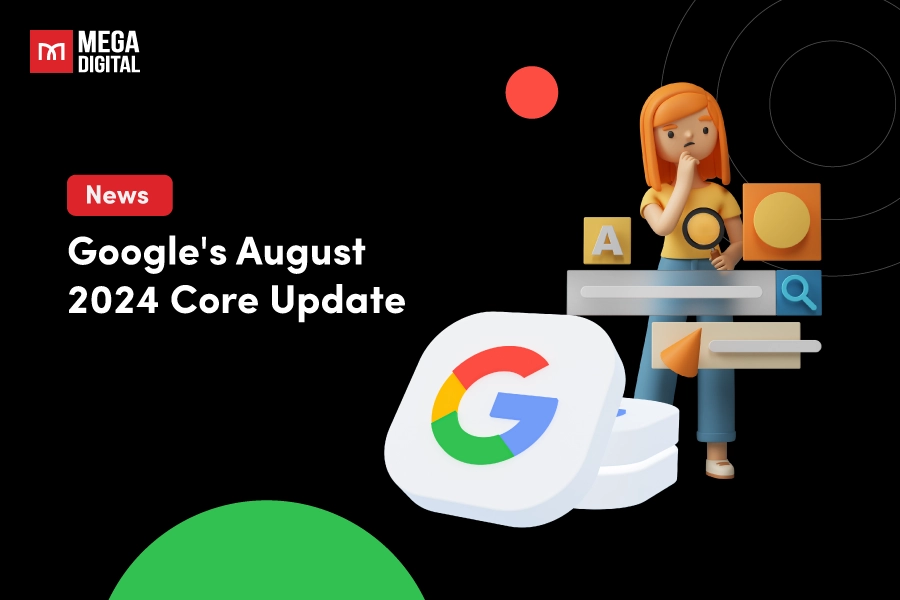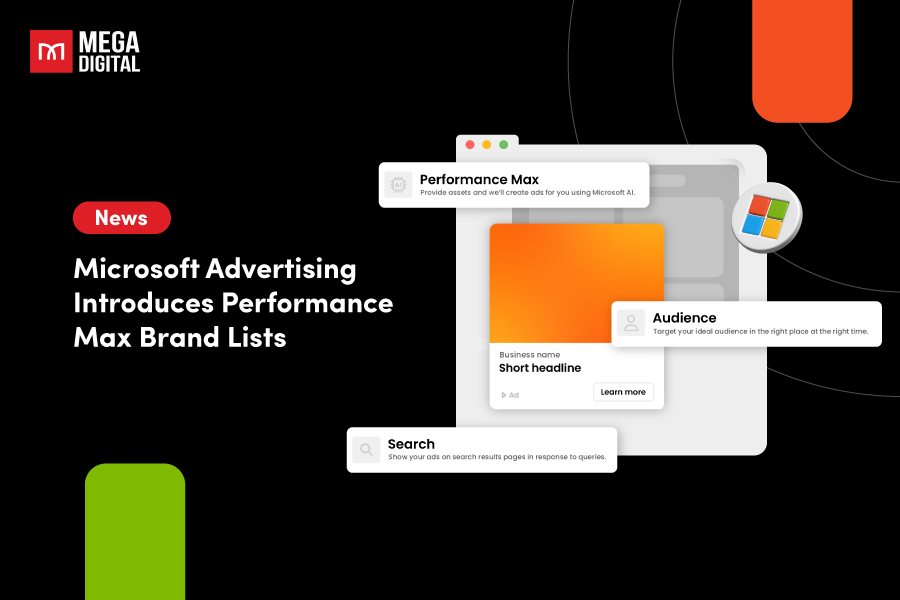Are you trying to sell more stuff on Amazon? Or make your keywords perform better? If that’s the case, you can’t overlook Google Ads. It’s a really useful tool for Amazon sellers. In this article, I’ll cover the benefits of Google Ads over a variety of other options for driving external traffic to Amazon, and how to run Google Ads for Amazon products.
Why Amazon Sellers Should Consider Using Google Ads?
Let’s address the pressing question: Why go for Google Ads?
The fundamental idea is simple – expanding sales channels leads to increased visibility for your product, ultimately resulting in more purchases.
By using Google Ads, you can boost your sales, subsequently enhancing your organic rankings.
Moreover, external traffic sources like Google provide an invaluable opportunity to cultivate a customer base, a capability not available on Amazon.

Here’s a closer examination of the benefits of employing Google Ads for Amazon products:
Increase Sales and Rankings
Marketing aims to boost sales, with Google Ads playing a key role. While many consumers start their product search on Amazon, a significant portion begins elsewhere, like Google Ads. Missing out on Google Ads means overlooking potential customers.
For instance, if a keyword gets 2000 searches on Amazon and 1000 on Google, tapping into the latter can expose your product to 50% more customers monthly, potentially boosting sales by 50%. Increased Amazon sales also improve search rankings, thanks to sales velocity’s impact on ranking factors. So, even if Google Ads sales just break even, they can still positively affect Amazon rankings.
Evergreen Traffic
AdWords represents a robust evergreen traffic source, necessitating less constant upkeep compared to platforms like Facebook ads. Once your ads are optimized and your cost-per-click (CPC) aligns with your satisfaction, they can essentially run in the background, freeing up your time and energy for other endeavors.
Similarities with Amazon PPC
For Amazon sellers, mastering Google Ads is comparatively easier due to its similarities with Amazon PPC, or Sponsored Products Ads.
While there are copywriting nuances and the need to optimize Quality Score (largely influenced by your landing page), the core principle remains to identify the right keywords and allocate resources to high-performing keywords.
If you’re already familiar with Amazon PPC (which is advisable before delving into external traffic sources), transitioning to Google Ads entails a less steep learning curve compared to platforms like Facebook.
Capture Emails and Grow Your Audience
One often overlooked advantage of Google Ads is the opportunity to build an email list, which Amazon doesn’t offer. Capturing customer contact information before they reach Amazon is crucial for unrestricted communication. An email list allows for various benefits, like gathering feedback, creating retargeting audiences, and launching promotions without hefty ad spend.
In essence, Google Ads add another sales channel, boosting earnings and improving Amazon search rankings. Additionally, Google Ads are user-friendly, low-maintenance, and compliant for building email lists.
How to Run Google Ads for Amazon Products
If you still want to set up Google Ads for Amazon on your own, read this step-by-step guide in detail!
Step 1: Create A Landing Page For Your Product
A landing page is a specialized webpage designed to convince visitors to complete a particular action, such as buying your product.
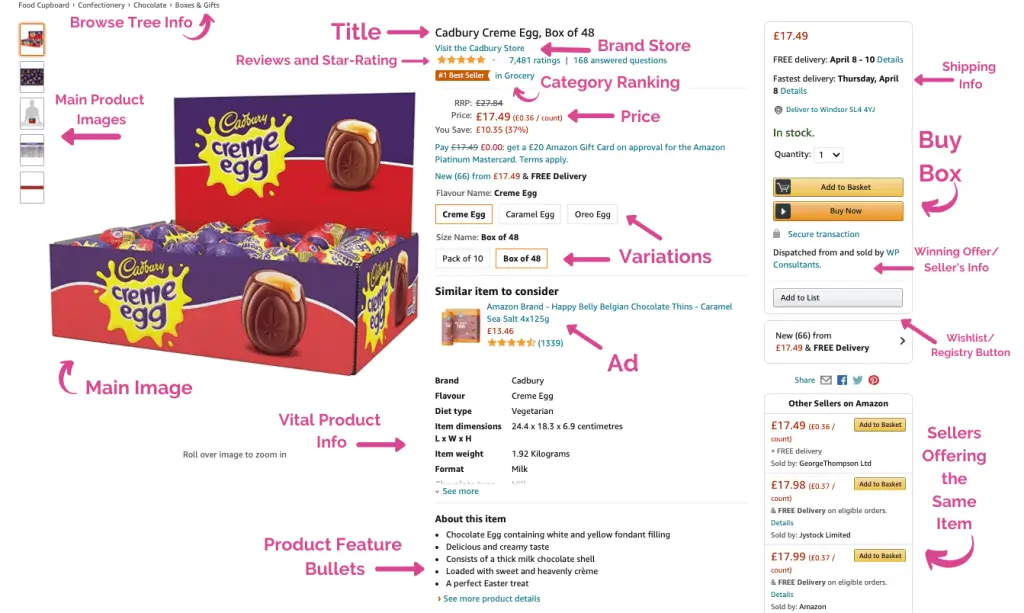
The first step in creating a landing page is crafting its design. Your landing page should be visually appealing and user-friendly, with clear and concise messaging.
- Here are some pointers for designing your landing page:
- Use high-quality images and videos of your product to showcase its features and benefits.
- Ensure your landing page is mobile-responsive, as more people are browsing and shopping on their smartphones.
- Incorporate a clear and prominent headline that communicates the main benefit of your product.
- Use bullet points to highlight the key features of your product.
- Include customer reviews with testimonials to build trust and credibility.
- Integrate an opt-in email form to capture leads and nurture relationships.
- Feature prominent “Buy Now” buttons directing visitors to the Amazon checkout page.
Step 2: Research Keywords for Amazon Product Google Ads Campaigns
Keyword research is vital for creating an effective Google Ads campaign. By pinpointing the appropriate keywords for your Amazon products, you can guarantee that your ads are visible to potential customers who are interested in your offerings.
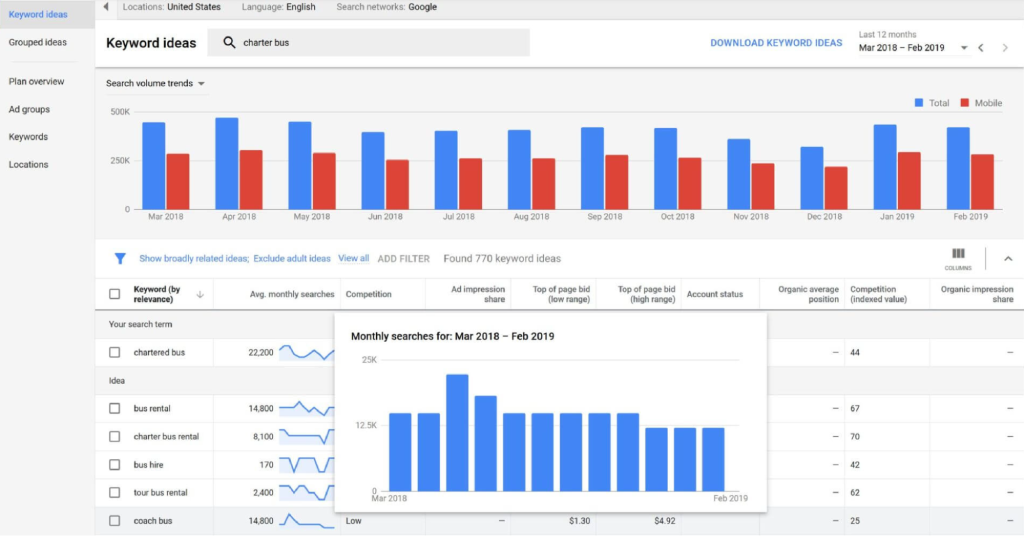
Tools like Google Keyword Planner and Amazon’s auto-suggest feature are great for finding relevant keywords for your campaign. Match these results with existing keyword analytics for your Amazon ad campaigns to find any overlap.
For example, if “black sneakers” searches on Amazon lead to more purchases than “shoes,” focus your Google Ad research accordingly. Use Amazon search data to inform new campaign keyword lists.
While broad-match keywords may cost more, they offer a wider reach for building brand awareness. But for optimizing conversions and clicks, long-tail keywords are more effective in driving targeted traffic to your landing page.
Test various keywords regardless of cost-per-click, and adjust bids based on their performance once you’ve identified top-performing keywords.
Step 3: Create a Google Ad Campaign to Promote Amazon Products
1. Set up Your Campaign
Navigate to your Google Ads account dashboard and select “New Campaign”.
Your initial task is to select your campaign goal, which may include options such as “Sales”, “Leads”, “Website Traffic”, or “Brand Awareness and Reach”.
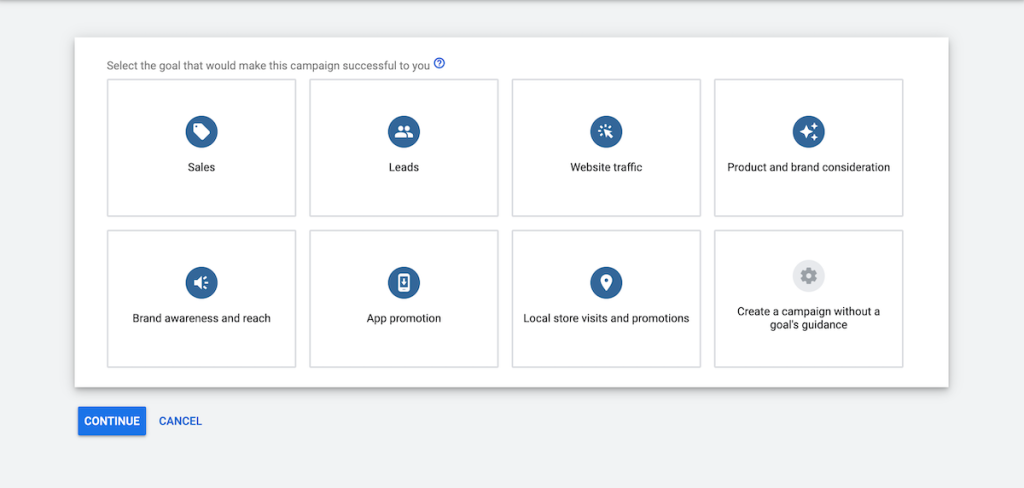
Your selection at this stage isn’t overly critical, as you’ll retain flexibility in setting up your campaign according to your preferences.
However, for effective tracking and analysis of your performance, it’s advisable to align your goal with your primary objective. Opt for “Sales” if your focus is on boosting sales or rankings. Alternatively, select “Leads” if your priority is to cultivate a list.
Following this, you’ll proceed to choose your campaign type. In this case, we’ll opt for Search ads.
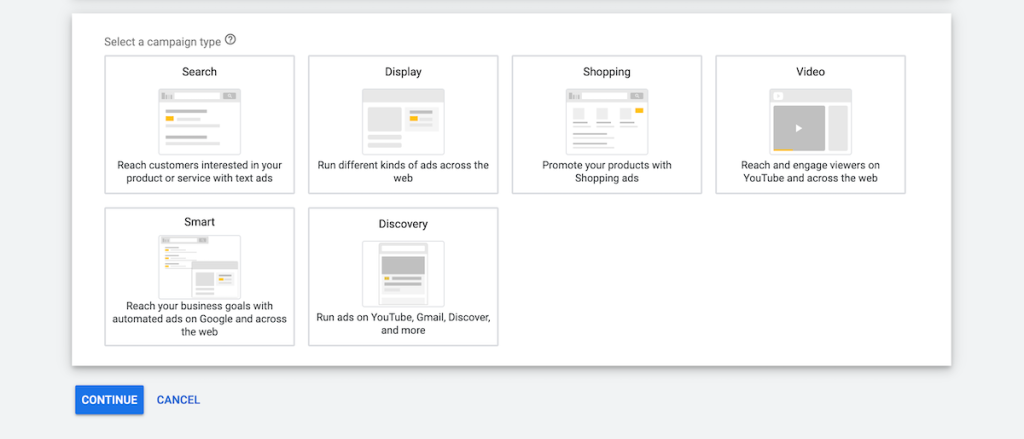
Lastly, you’ll specify how your chosen goal will be achieved. Opt for “Website Visits” and then paste your landing page link into the designated field below. Then hit Continue.
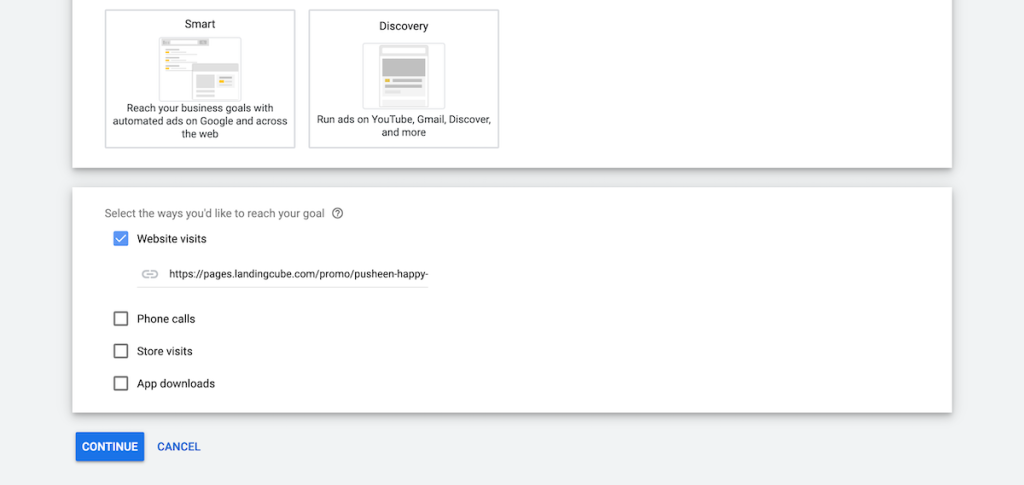
2. Configure Your Basic Campaign Settings
Begin by assigning a clear and recognizable name to your campaign.
For now, deactivate the “Search Network” and “Display Network” settings.
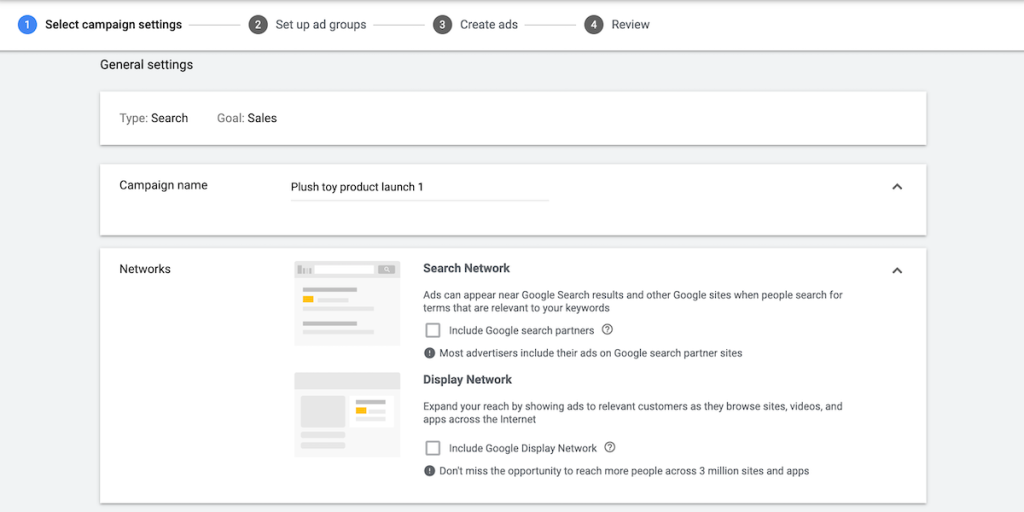
You have the option to set a start and end date for your campaign, or you can leave it to run indefinitely until you manually pause it.
For beginners, it’s often advisable to leave these settings unchanged.
Next, specify the location where your products are sold and the language(s) spoken by your target audience. If you’re selling on Amazon.com, typically target the United States and English-speaking audiences.
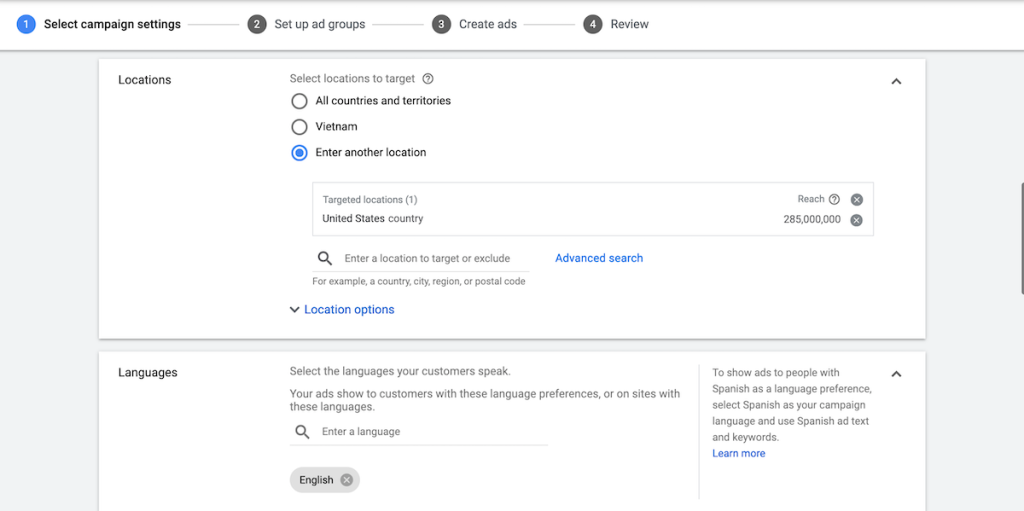
The last step involves configuring your budget and bidding settings.
Regarding your budget, consider commencing with a conservative daily budget, though anticipate the need to adjust this over time, as a $5 daily budget may yield limited results.
As for your bidding settings, there are several approaches you can take.
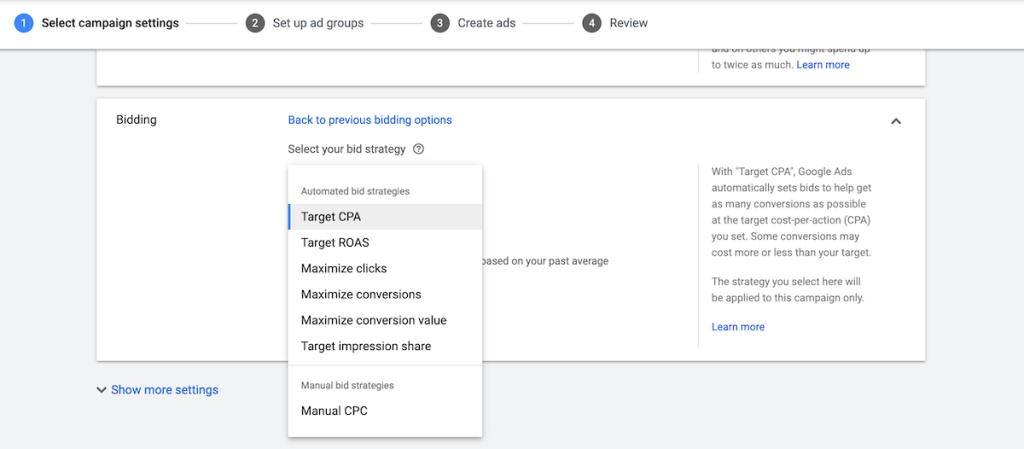
Use Google’s AI to specify your focus, such as conversions, clicks, or impressions, along with the desired expenditure for each event — your target cost per action (CPA).
For instance, opt for “Conversions” with a CPA of $5, indicating your willingness to allocate $5 for each conversion. This approach is appropriate if you’ve determined the value of a conversion, such as being able to afford $5 for each sale while maintaining profitability.
However, optimizing this for Amazon sellers can be challenging, as it’s difficult to accurately optimize for sales without the ability to install Google tracking code on your Amazon store.
Alternatively, you can select from various other automated bidding strategies or manually set your target cost per click (CPC).
For now, let’s opt for “Manual CPC”.

3. Set up Your Ad Group
Ad groups contain ads designed for related keywords. Start with one ad group; later, experiment with different ones targeting distinct sets of keywords. Set your default bid and choose relevant keywords, possibly deleting overly broad suggestions from Google.
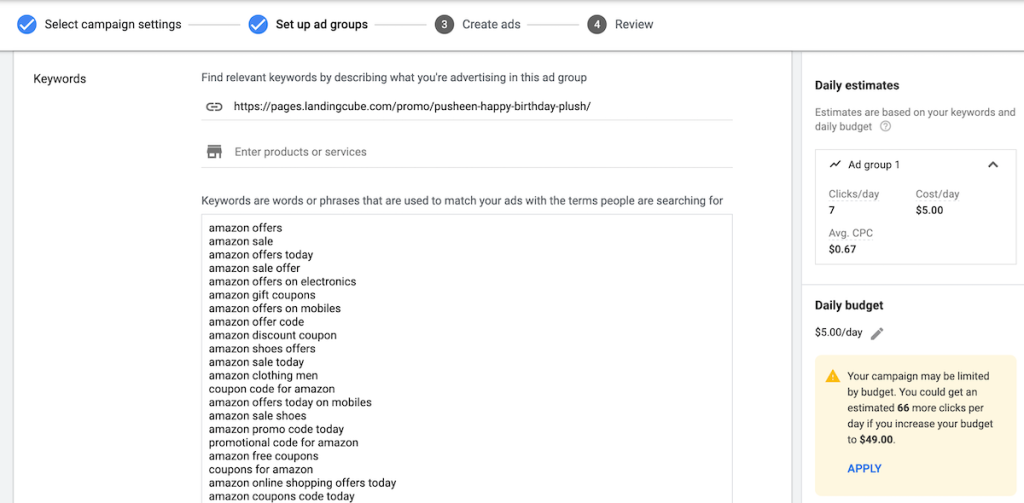
Take the time to select the right keywords for your ad group. Focus on keywords highly relevant to your product, with strong buyer intent and significant search volume. Use tools like Google’s Keyword Planner or Ahrefs to assess search volume.
Ensure chosen keywords are relevant to each other, considering dividing them into smaller ad groups if necessary. Start with two simple ad groups to test different keyword/match type combinations.
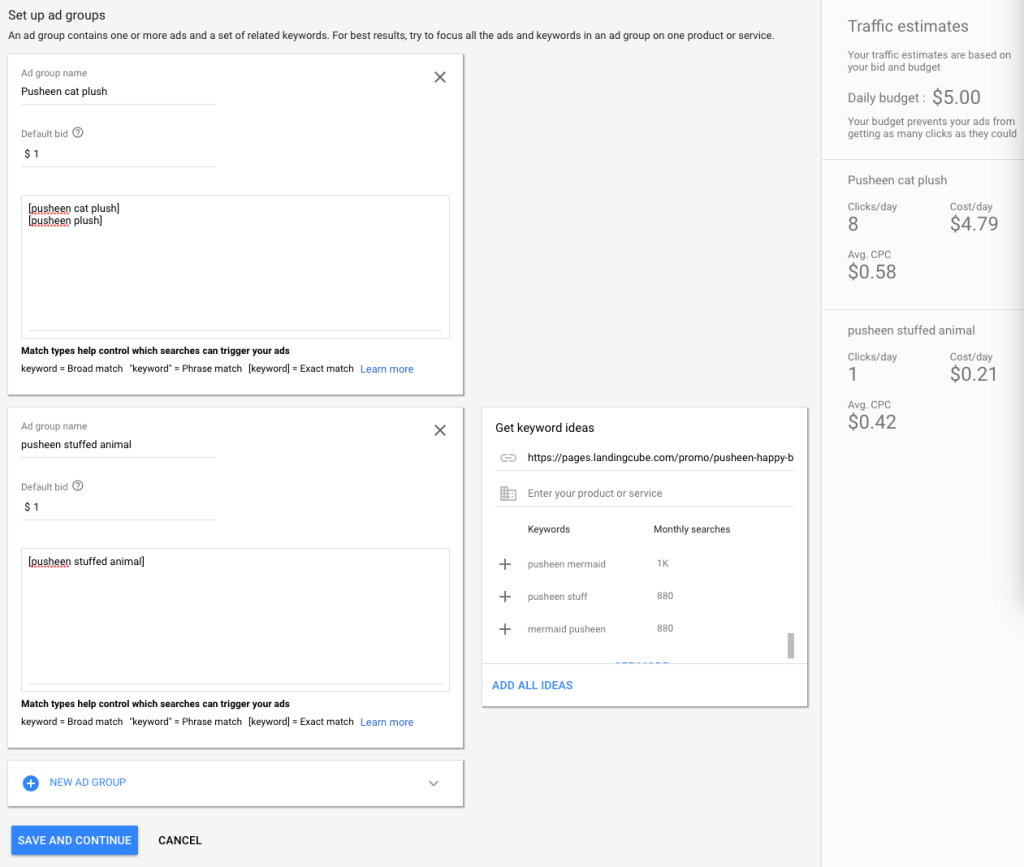
You have the option to select from several match types for your keywords:
- Broad match: This is the default match type, which includes related keywords like synonyms and misspellings.
- Phrase match: Enclose your keyword in “quotation marks” to ensure the exact phrase appears in the search term, allowing for additional words before or after your specified phrase.
- Exact match: Place your keyword in [square brackets] to ensure only the exact term is included, without any additional words.
- Negative keywords: Prefix your keyword with a minus sign ( – ) to exclude your ad from appearing in search results for that specific term.
4. Set up Your Ad
Now, let’s proceed to the last step: crafting your ads. It’s essential to have a basic understanding of copywriting to ensure your Google Search Ads are effective.
Given the limited space available, you must efficiently communicate information about your product, any offers you may have, and provide a compelling reason for people to click through. Therefore, avoid wasting space on unnecessary words.

Additional tips for crafting compelling ads from Mega Digital:
- Incorporate your keyword into your ad. Including keywords boosts click-through rates, as Google highlights them in bold.
- Include a clear call to action, such as “Buy Now”, “Learn More”, or “Claim Your Coupon”.
- Highlight special offers or limited availability. If you’re offering a significant discount or have limited units left, mention it in your ad text.
- Capitalize All Words. Extensive testing indicates that ads with every word capitalized have higher click-through rates.
Now, hit Done to launch your Google Ads for Amazon products campaign!
If you think this guide is still quite complicated, there are faster and more effective solutions, such as partnering with a trusted Google Partner like Mega Digital to have them manage your campaign for you or receive guidance on running it yourself!
Tips for Optimizing Better Google Ads for Amazon Sellers from Mega Digital
Here are some tips from Mega Digital for optimizing Google Ads specifically for Amazon sellers:
Highlight promotions and discounts
If your product feed contains both the original and sale prices, consider including them in your text ads or displaying the percentage discount.
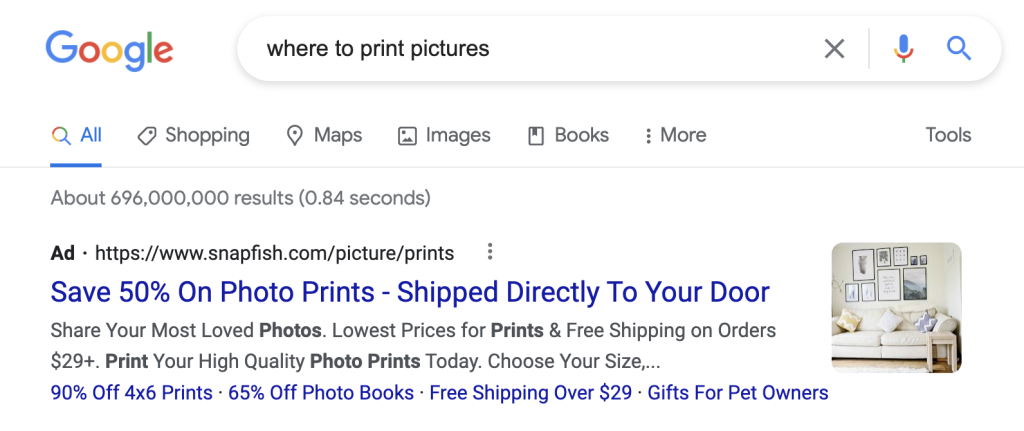
Online shoppers are particularly responsive to promotions, so emphasizing a sale can significantly boost click-through rates.

Use social proof
With social proof, you can boost your credibility by showing potential customers why others love your products. Share which items are your top sellers and explain why people like them. This could mean talking about what makes them special, like great reviews or awesome features. By letting people know that others are happy with your products, you can help them feel more confident about buying from you.

Create a sense of urgency
Advertise your product with a sense of urgency to encourage immediate purchase.

Wrap up
Using Google Ads for Amazon products offers a potent avenue for boosting visibility and sales. By refining your campaigns, selecting pertinent keywords, and crafting engaging ad copy, you can effectively reach your target audience and optimize your return on investment.
If you are still worried about policy issues or disapproval, especially with time-sensitive campaigns, renting a Google Ads agency account from Mega Digital is a smart solution to scale faster and keep your ads running smoothly with appeal support and expert consultation!






